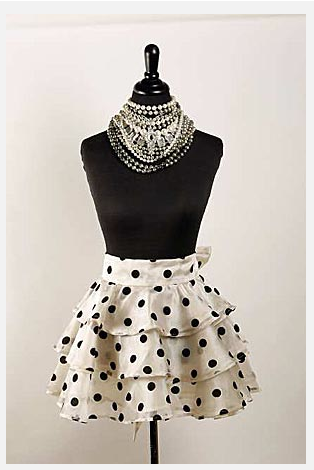The garment no longer symbolizes women’s relegation to the kitchen but their delight in being there. – Rene Lynch for The Los Angeles Times
Is there another kitchen object that carries as much baggage as the apron?
A whisk and a wooden spoon are, after all, tools to get the job done. But an apron?
For years, aprons were commonplace and worn with pride. But somewhere along the line the apron became shorthand imagery for all that was holding women back, an emblem of humble domesticity and repression. When an apron was required for practical reasons, it certainly wasn’t flaunted. (If your mom was like mine, she’d yank that apron off before answering the front door.) And still today, when a man is too close to his mother, we say he’s tied to her apron strings.
But a growing community of self-proclaimed apronistas is seizing the apron back from such dusty, anachronistic thinking. No longer a symbol of kitchen drudgery, the apron has returned with a vengeance, ushered by a renewed appreciation of all things domestic.
“We don’t have to live by anyone else’s definition of what it means to be a woman, or a mother or a wife, that time is over,” says Cynthia Wadell of Orange, founder of Heavenly Hostess, a line dedicated to upscale aprons and kitchen linens.”You get to decide what that apron means. It’s your choice.”
Of course, it helps that today’s aprons are not just aprons. Forget those unisex, butcher-style, fuddy-duddy aprons. Today’s models — even the workhorse aprons, the ones you actually use to wipe off hands and fend off splatters — are fun. They’re flirty. Sassy. Ironic. Fashion forward. And sexy: Full-length versions not only cover up but also enhance the bustline and play up an hourglass figure with a cinching of the waist.
And yet they don’t take themselves too seriously: The Annie’s Attic online boutique at Etsy has a line of aprons embellished with skulls.
Then there are the hostess and cocktail aprons. You do not — repeat, do not — wipe your hands on these. Not with price tags that can top $100 apiece. Wadell’s aprons, for example, are wearable works of art, ethereal confections made of tulle, organza and luxurious satin, an accessory that polishes off an outfit and sends the message: “I am your hostess. And it’s going to be a great party.”
In other words, it wasn’t that long ago that an apron would be the last thing you’d buy a mom on Mother’s Day. Now it might be just the right thing.
Apronistas say the evolution of the garment mimics the broadest strokes of the women’s movement. Seen as the homemaker’s uniform in a “Leave It to Beaver” kind of way, aprons were ripped off and cast aside as women moved from home and kitchen to the workplace, says Janice Longone, curator of American culinary history at the University of Michigan in Ann Arbor.
When an apron was, by necessity, called for, it was as likely to be one of those utilitarian fabric sheets, easily worn by man or woman — mirroring the desire for equality between the sexes.
But that is lost on later generations who have rediscovered the domestic arts, who unwind after a long hard day with Food Network and Martha Stewart Living magazine. They see no shame in spending the afternoon perfecting their recipes for shortbread or short ribs — and, in fact, they brag about it on their blogs. It was just a matter of time before they decided they wanted to look good doing it too.









4 comments ↓
this post is very usefull thx!
Greatings, Ya he visto algunos hay …
Gracias
Miato
Thanks for this article! However, I had a difficult time viewing this post in Safari 5. Just wanted to bring that to your attention! Thanks.
This is a brilliant article! Loved it! So so well written & captured the wonderful return of the apron in all its glory. Im even going to quote you on my own blog; with your site & name referenced of course
Leave a Comment